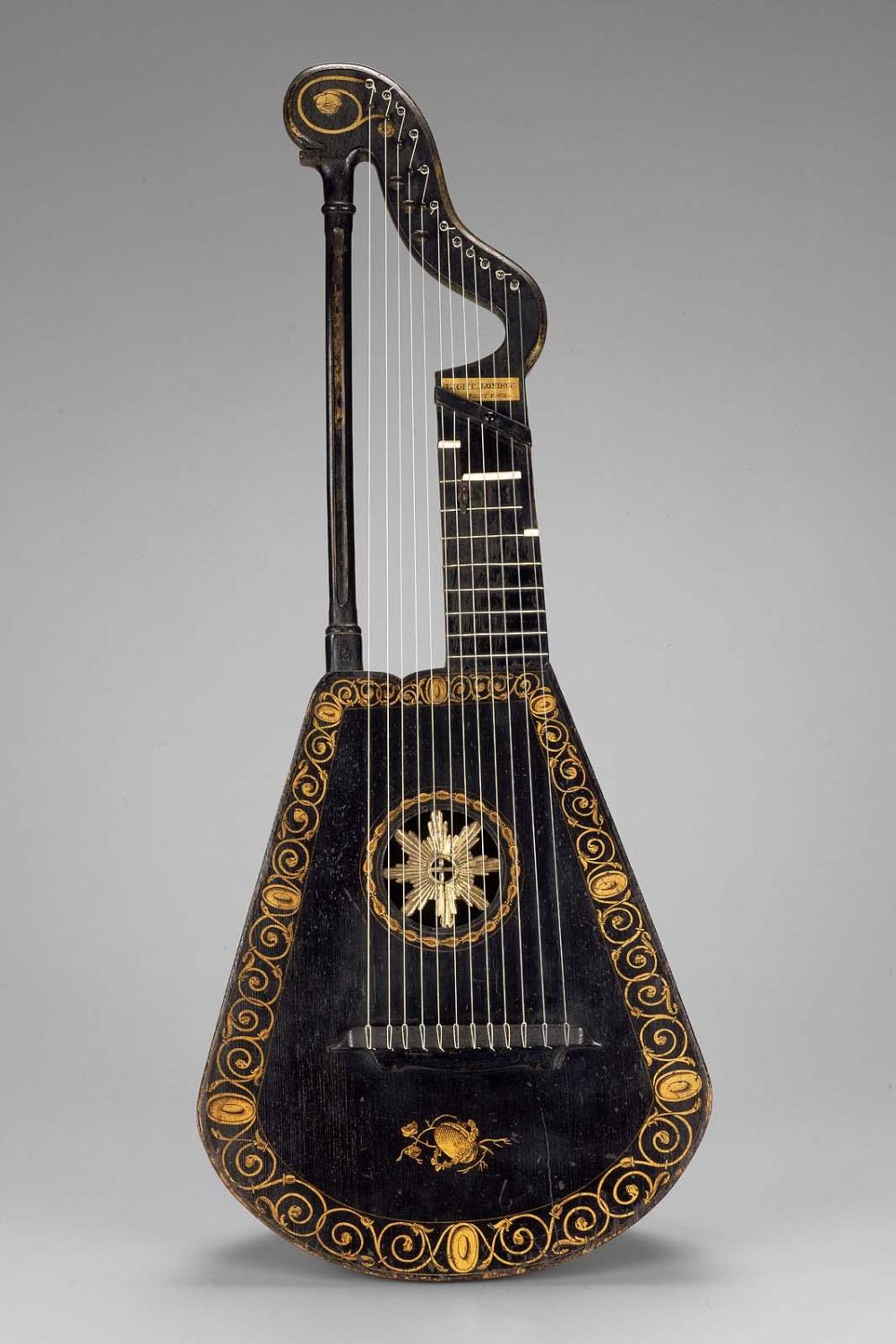Advanced Search
Harp-lute
Invented by: Edward Light (English, 1747–1832)
Probably manufactured by: A. Barry (English, active early 19th century)
Probably manufactured by: A. Barry (English, active early 19th century)
about 1815
Object Place: London, England
Medium/Technique
Mahogany, spruce, ebony
Dimensions
Length 85.7 cm, width 35.6 cm, depth 14.5 cm (Length 33 3/4 in., width 14 in., depth 5 11/16 in.)
Credit Line
Leslie Lindsey Mason Collection
Accession Number17.1769
NOT ON VIEW
CollectionsEurope, Musical Instruments
ClassificationsMusical instruments – Chordophones
DescriptionBack comprised of seven ribs of mahogany (?), with narrow oval soundhole at center. Belly of fine-grain spruce decorated with gilt scrolling patterns. Back and bottom of body outlined by gold stripes. Separate carved soundhole insert of gilded wood in cross and sunburst pattern. Neck, harmonic curve, and support column of maple (?).Tuning pins of iron. Fingerboard of ebonized wood with eight frets of ivory. Three loops of brass on harmonic curve for raising pitch of strings and small capo of brass on fingerboard between first and second frets, affecting fifth and sixth strings. Nuts of ivory. Bridge of ebonized wood. Seven main strings and five diapason strings. Ebonized varnish. Internal construction: Four lateral braces on belly (one above soundhole).
InscriptionsGilt lettering on neck: LIGHT LONDON / Foley Place
ProvenanceFrancis W. Galpin (1858-1945), Hatfield Regis, England; 1916, sold by Francis W. Galpin to William Lindsey (1858-1922), Boston, Massachusetts; 1916, gift of William Lindsey, in memory of his daughter, Leslie Lindsey Mason, to the MFA. (Accession Date: October 5, 1916)



